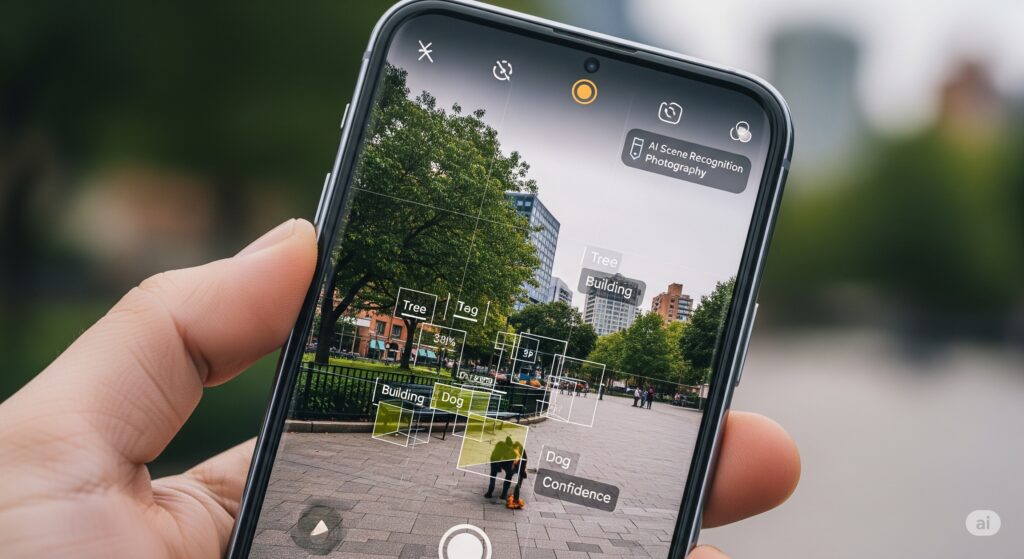Discover 5 breakthrough technologies revolutionizing photography—from AI-powered cameras and nanotech lenses to AR and light field imaging. The future is already in your hands.Remember the moment you first took a stunning photo with your phone and thought, “Do I even need a DSLR anymore?” That same shift is happening again—but this time, the transformation is deeper, smarter, and faster.
Emerging technologies are completely rewriting the rules of photography. From AI-powered cameras to lenses crafted with nanotech, photography isn’t just about capturing moments anymore—it’s about reimagining reality.
- 1. Computational Photography: Your Phone, Smarter Than Ever
- 2. Next-Gen Mirrorless Cameras: The Fusion of Smart, Fast, and Lightweight Technologies
- 3. Light Field Photography: Focus After You Shoot
- 4. Nanotech Lenses: Smaller, Smarter & Mightier Technologies
- 5. Augmented Reality Integration: Shoot the Future
- Never-Asked FAQs (But Should Be)
- Conclusion: Ready or Not, Future Technologies is Here
1. Computational Photography: Your Phone, Smarter Than Ever

AI Scene Recognition in Real-Time
No more fiddling with settings. Modern smartphones recognize what you’re shooting—be it a person, food, or a sunset—and adjust exposure, color, and sharpness instantly. Your phone is no longer a camera; it’s a pocket-sized studio.
Multi-Frame Magic
Night mode uses 10–15 rapid shots to build a single, crisp image in the dark. Advanced HDR blends multiple exposures to preserve both shadow and highlight. This means photos that once needed a tripod and Lightroom now come straight from your phone.
AI Upscaling & Noise Removal
AI can now increase the resolution of images without making them blurry and remove digital noise while preserving fine detail. These tools don’t just clean your photo—they enhance it based on what the scene should look like.
Smart Framing for Better Composition
Real-time guides suggest the best framing, like the rule of thirds or golden ratio, while motion prediction helps you snap action at the perfect moment.
2. Next-Gen Mirrorless Cameras: The Fusion of Smart, Fast, and Lightweight Technologies
Dive into the revolutionary world of next-generation mirrorless cameras, where cutting-edge technologies converge. This description explores how these devices are redefining photography with their intelligent, high-speed, and ultra-portable designs.
Discover the fusion of smarter autofocus systems, blazingly fast processors, and lightweight, ergonomic bodies that empower creators to capture stunning visuals with unprecedented ease and precision. This isn’t just an evolution; it’s a complete reimagining of the creative process, making professional-grade performance accessible to everyone.
Global Shutters: No More Wobbly Images
Say goodbye to jelly-like distortions from fast motion. Global shutters expose the entire image at once, capturing speed and clarity together—perfect for action, motorsports, and flash photography.
Built-In AI Brains
Upcoming mirrorless cameras will come equipped with AI processors. Real-time tracking, scene analysis, and automatic enhancements will make even difficult shots simple and stunning.
Adaptive Optics for Challenging Environments
Taking photos through rain, heat haze, or from a moving car? Adaptive optics reshape lenses on the fly to correct blur and distortion. It’s like having your own atmospheric shield.
3. Light Field Photography: Focus After You Shoot

4D Image Capture
Light field cameras don’t just record light—they record direction. Every ray is stored with depth info, letting you refocus after the fact.
Post-Capture Focus & Depth Editing
Want background blur after the shot? Or bring the background into focus instead? With light field images, it’s all possible with a click.
Extracting 3D From One Photo
One shot can now deliver stereo images, parallax effects, and depth maps. That’s right—real 3D imaging, all from a single frame.
4. Nanotech Lenses: Smaller, Smarter & Mightier Technologies

Molecular Zoom Innovation
Engineered at the nano level, zoom lenses are shrinking dramatically. Some in development can deliver 10x zoom in a lens smaller than a coin—ideal for compact, high-performance gear.
Liquid Crystal Zooming
Forget slow lens motors. Liquid crystals change focal length instantly with electric current. Tap a button, and your lens transforms in milliseconds.
Self-Cleaning, Scratch-Healing Coatings
Nanotech coatings now repel water, dust, and fingerprints. Some even “heal” scratches using sunlight-triggered molecular realignment.
Lighter Lenses with Better Quality
Nanostructured materials reduce lens weight by up to 70% without sacrificing clarity.Think about going for a hike with a 400mm lens that’s lighter than the water bottle you’re carrying.
5. Augmented Reality Integration: Shoot the Future
Live Scene Info Overlays
Direct your camera toward a mountain to view the names of its peaks.Photograph the sky, and get Milky Way projections. AR enhances creativity by making your camera smarter and more informative.
Gesture Control & Eye Tracking
New cameras are ditching buttons. Focus with your eyes, capture with a gesture—ideal for extreme environments or immersive shooting experiences.
Real-Time Editing & Virtual Object Removal
Remove distractions while framing the shot, or visualize lighting setups before snapping. AR tools now let you “fix it” before you shoot.
Shared AR Experiences
Multiple photographers can link viewfinders, control each other’s cameras, and share perspectives in real-time—great for teams in events, wildlife, or fashion.
Biometric Viewfinders
New viewfinders adapt to your eyes, even if you’re colorblind or wear glasses. They adjust brightness, contrast, and clarity based on your vision profile.
Never-Asked FAQs (But Should Be)
Q: Can my smartphone photos now rival professional cameras?
A: In many cases, yes—especially with computational photography. Pros still rely on raw sensor quality, but AI levels the playing field fast.
Q: Will AR photography make real photographers obsolete?
A: Not at all. It enhances creativity. Tools don’t replace vision—they empower it.
Q: Is light field photography available in consumer cameras yet?
A: Not widely. But some smartphone brands are experimenting. Expect it in mainstream gear within 3–5 years.
Q: Are nanotech lenses durable enough for rough use?
A: Yes. Nanostructured materials are not just lighter—they’re stronger and more resistant to impact and wear.
Q: What happens to traditional DSLRs?
A: They’re becoming niche tools for specific use cases. Tomorrow’s success will be built on intelligent, integrated, and streamlined systems.
Conclusion: Ready or Not, Future Technologies is Here
Photography is undergoing a radical reinvention. From AI-driven image creation to lenses that reshape themselves, the camera is no longer just a passive recorder—it’s an intelligent partner.
Whether you’re an amateur capturing family moments or a professional chasing visual perfection, these technologies offer new freedom and power. It’s not just about sharper photos—it’s about changing how we see and capture the world.
Embrace it. Learn it. Shoot it. The dawn of tomorrow’s photography is unfolding right within your grasp.